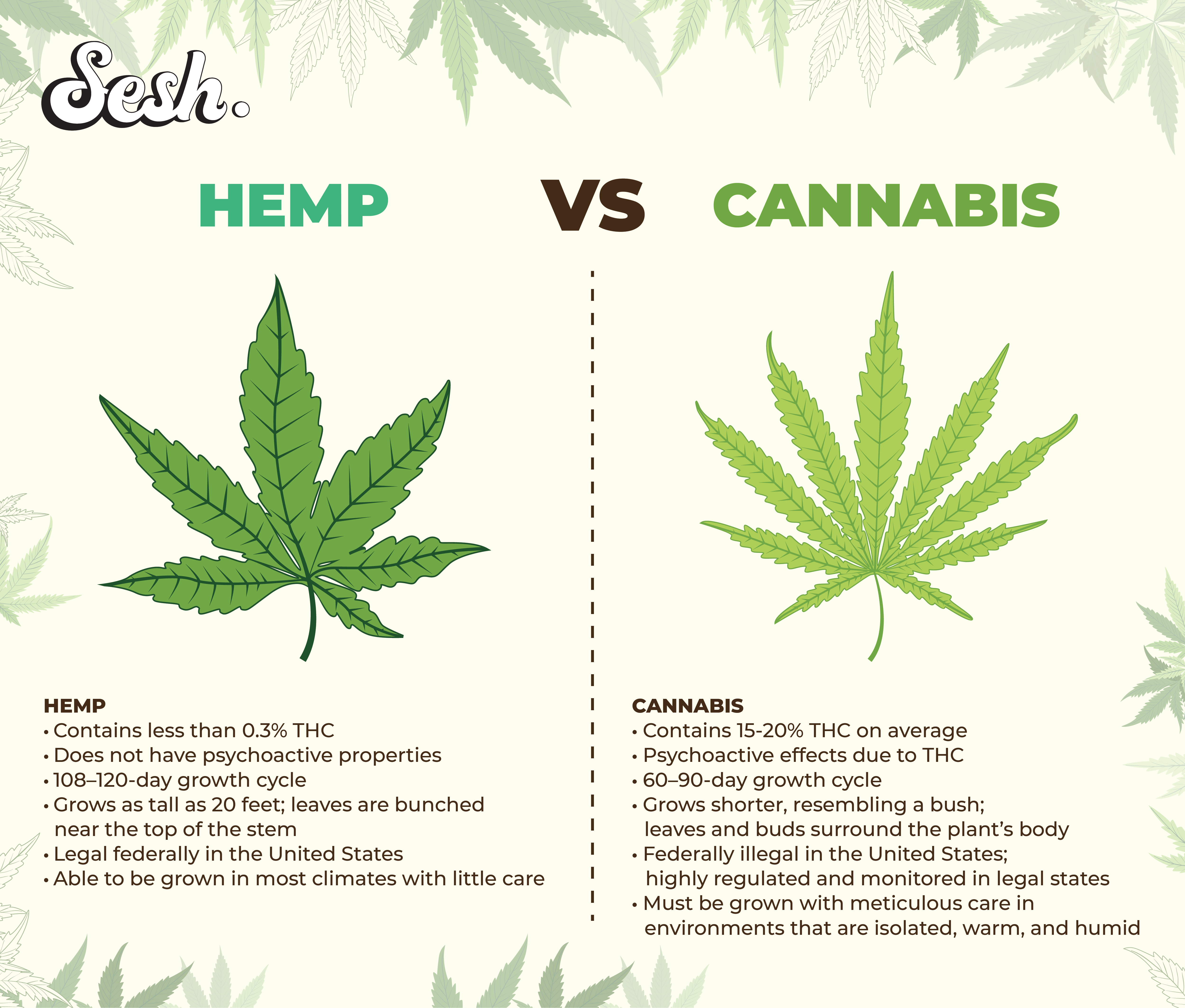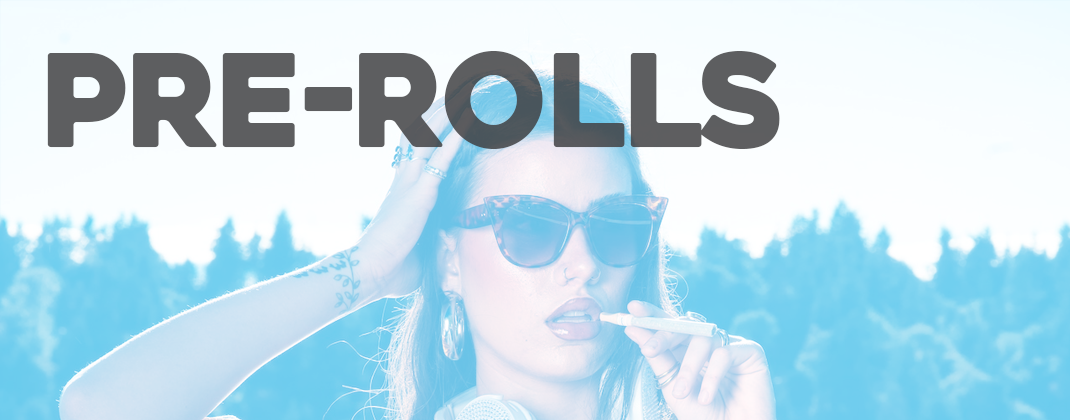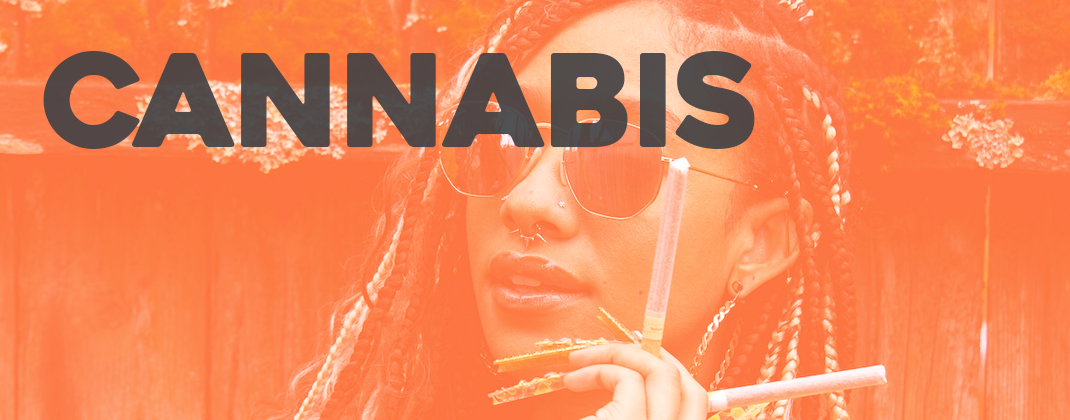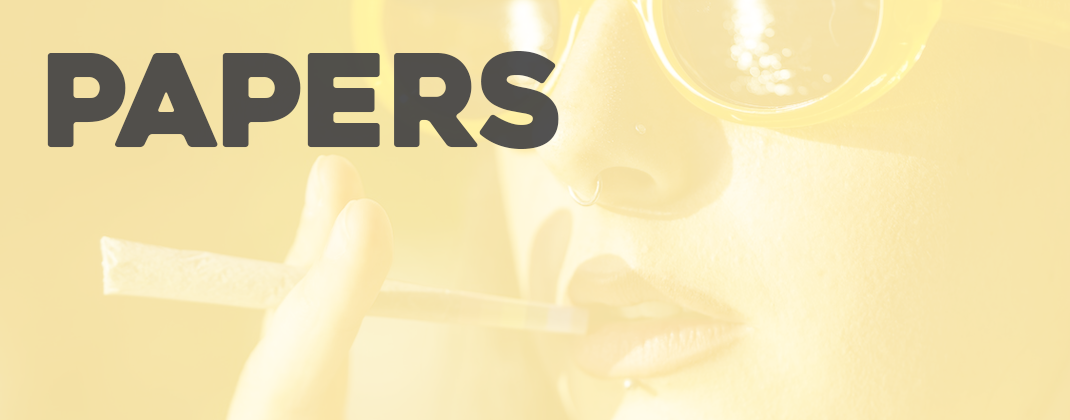Debunking Myths About Marijuana
Posted by DaySavers Team on Sep 20th 2023
Updated: April 8, 2025
Should you eat edibles on an empty stomach?
Is it true that the bigger the joint, the bigger the high?
Whether you’re a seasoned smoker or just beginning your journey, you’ve likely encountered some common cannabis myths. And with so many people holding strong beliefs about weed – how to smoke it, how it affects you, and how it gets you high – it can be difficult to separate fact from fiction.
But fear not! The DaySavers are on the case. We’re here to set the record straight and debunk some of the most common cannabis myths...so you can sort through the haze of misinformation. Let's dive in.
Myth: Cannabis is Addictive.
Truth: While some may experience a psychological dependence on cannabis, it is not a physically addictive substance.
Reefer Madness-era propaganda promoted devastating effects of cannabis to scare people and paint cannabis as a narcotic that was as dangerous as heroin and cocaine. The Devil’s Lettuce was stereotyped as a gateway drug that led to other amoral and dangerous behavior, like sex, violence, and crime.
The truth is that cannabis is not a gateway drug and is not physically addictive in the way that narcotics and hard drugs are. Stoners who stop smoking will not experience withdrawal symptoms – although, if they were using marijuana as an ailment to any symptoms, they will notice those symptoms may return. If you use it to help stimulate your appetite, stopping may lead to a lack of appetite. If it helps you sleep, not using it may allow your insomnia to return.
All of this being said, it is still possible to be psychologically dependent on, or psychologically addicted to cannabis. What does that mean, exactly?
Cannabis changes the dopamine levels in the brain. By elevating dopamine levels, marijuana trips our brains’ reward system and makes us feel good. But when dopamine levels are high for too long, the body starts closing off some of your dopamine receptors. This results in a lower dopamine synthesis in your body – making things bring you less pleasure than they used to. Things like food, hobbies, physical touch, and achievement won’t bring the same satisfaction they used to, and this can lead to low motivation, depression, and poor working memory.
Thankfully, it’s believed that the body and the brain can recover from this impact on the dopamine system and restore dopamine activity to normal – with enough time and sobriety, of course.
Myth: Cannabis is Tied to Memory Loss
Truth: Cannabis use was associated with 96% decreased odds of subjective cognitive decline compared to non-users
Think that consuming cannabis makes you more forgetful?
Yes, it’s true that heavy and prolonged cannabis use has been linked to short-term memory impairment, especially in the brains of young people who are still developing. But moderate consumption won’t erase your memory overnight.
Cannabis users actually have decreased odds of cognitive decline, according to a study published in the Alzheimer Research Journal. The study showed that compared to non-users, cannabis use was associated with 96% decreased odds of subjective cognitive decline.
So, while cannabis may affect your memory from time to time, there’s no reason to panic. Moderation is key. So, puff away responsibly, keep your brain in check, and enjoy the ride.
Myth: Cannabis and Hemp are the Same Plant.
Truth: Cannabis and hemp are the same species of plant, but there are important distinctions that make them sisters, rather than identical.
Both cannabis and hemp derive from the cannabis sativa family and share many similarities – but they do have different biological structures and very distinct differences.

Myth: Eating a Mango with Your Toke Gets You Higher.
Truth: Thanks to the terpene myrcene, eating a mango with your toke gets you higher!
Foods, like cannabis, contain terpenes. Mangos contain the terpene myrcene, which is a terpene commonly found in cannabis that causes sedated effects like couchlock. On its own, myrcene will not get you high. However, myrcene does affect blood-to-brain partition, which regulates what can pass into the brain from blood. Myrcene lowers the barrier, allowing for substances like THC to pass into the brain easier than they would normally. This results in a quicker, more intense high!
Myrcene isn’t only found in mangoes – it can also be found in thyme, guava, eucalyptus, lemongrass, and hops! All of these foods will help magnify your high.
Myth: Chewing Peppercorns Will Bring Down Your High if You Get Too High.
Truth: Because of the terpene caryophyllene, chewing peppercorns will indeed bring down your high if you get too high.
We’ve all been there – after smoking a little too much, you might find yourself a little uncomfortable and you may want to be a little less high. Pop a peppercorn in your mouth and give it a chew! It might not taste great, but it’ll do the trick.
Why?
Just like mangoes, the answer is terpenes! Peppercorns contain caryophyllene, which is known to create a soothing effect and counteract psychoactive effects caused by THC. Caryophyllene, also found in cinnamon and cloves, is the only terpene that can bind to the same receptors as THC in the body, allowing it to soothe the body physically without causing any additional feelings of euphoria.
Another food item that can bring down your high is lemon juice, thanks to the terpene limonene and its stress-relieving qualities!
Myth: Orange Peels Can Rehydrate Your Weed.
Truth: Orange peels can rehydrate your weed, but they can also cause your weed to mold.
No one likes smoking dry, crunchy weed. And trying to pack pre-rolls with dry weed never results in a smooth smoke! A common method within the cannabis community to give your old weed new life is to add an orange peel to the container your bud is in. And it works! However, it may also cause mold, which is dangerous to ingest and something you should avoid smoking!
To keep your weed fresh, we recommend storing it in an air-tight container and popping in a moisture pack! Boveda moisture packs are designed to regulate the humidity levels in cannabis without oversaturating it with moisture.
Myth: Rice Paper is Made From Rice
Truth: Rice Paper is not actually made from rice!
Ever wonder if those rolling papers labeled as "rice papers" are actually made of rice? Well, we hate to burst your bubble, but rice is more about marketing magic than grainy goodness. The reality is that most rolling papers are made from wood pulp, not rice fibers.
The term "rice papers" traces back to the early days of paper innovation, where clever marketing tactics took root. Back then, manufacturers sought to distinguish their products with catchy labels. Enter “rice papers” - a moniker designed to evoke images of organic fibers harvested straight from the fields.
But while wood pulp may not contain wholesome grain, these rolling papers do offer a great experience for smokers. Refined paper pre-rolls have the perfect balance of thickness to maintain the structural integrity of the paper, while still being thin enough to ensure a smooth and even smoking experience.
It’s the Goldilocks of paper materials – not too thin, not too thick, it’s just right. So, next time you're reaching for your favorite rolling papers, remember: the truth lies not in the grain, but in the pulp.
Here at DaySavers, our Refined White Paper Cones are made from sustainably sourced paper procured from the world’s finest paper producers. Contrary to popular belief, these cones aren’t bleached; to get achieve the desired white color, we use the same plant matter used for our Natural Brown Cones, but the pulp is cleaned and refined further, so that less of the plant matter remains, no bleach or chlorine necessary!
When it comes to enjoying cannabis, knowledge is power. By understanding the facts behind common cannabis myths, we can elevate our smoking experience and make informed choices that enhance our enjoyment while minimizing risks.
Myth: White Ash Means the Weed is Higher Quality
Truth: There is no way to tell the quality of your flower using only the ash color
Ask any stoner about ash and you’ll probably hear all about how white ash is superior. Many people swear by the belief that white ash is a telltale sign of higher-quality weed. But the truth is this has no scientific backing.
The ash color has to do with myriad factors including how you’re smoking your weed, the amount of resin in the weed, and whether or not it contains contaminants. But one of the main influencers of ash color has to do with whether the cannabis plant was “flushed” during production.
Flushing is a process that involves removing nutrients from the cannabis before harvest. One of the most common cannabis myths is that flushing leads to a better flower, but studies show that it really doesn’t impact the yield.
Long story short: there’s no way to tell the quality of your flower using only the ash color. If you want to use better products, it’s better to look for cannabis and smoking accessories that are free of harmful additives. DaySavers rigorously tests all products for heavy metals, microbials, pesticides, and more to ensure the highest standards of safety and quality for our customers.
Myth: Putting Your Grinder in the Freezer Produces More Kief.
Truth: Putting your grinder in the freezer allows you to retrieve more of it from your grinder.
Kief is a powdery substance that is a result of broken-down trichomes from your bud. These trichomes, and the subsequent kief, contain a high amount of THC and terpenes. If you have a 3-Chamber Grinder, the bottom most chamber collects sifted kief, allowing you to reserve it and save it up to top your bowls with or turn into edibles. It’s commonly known as a kief-collector.
Trichomes are naturally very sticky, so powdery kief is sticker than it looks. Because of its stickiness, kief often gets stuck in the sides and crevices of your grinder. If you freeze your grinder, this helps keep the stickiness at bay and lets you scrape more of it out of your grinder. We’ve found the most success with using a toothbrush to get the kief out, but it’s also popular to freeze a nickel with the grinder in the kief-collector, and then shake the grinder once it’s cold to loosen the kief.
Myth: To Use the Most Kief Possible, You Should Boil Your Grinder in Milk and Make Cocoa
Truth: Boiling your grinder in milk and drinking it is a bad idea.
While it’s a popular trend on social media, boiling your grinders in milk is unsanitary and unsafe – because grinders aren’t food-safe, toxic chemicals and paints can seep into your milk as you boil it.
If you want an infused hot cocoa recipe, here’s something we recommend instead:
- Thoroughly empty the kief from your grinder – use the freezer method, or you can opt for using a clean toothbrush or paint brush.
- Bring a cup of milk to a simmer on low heat.
- Add your kief and simmer for 30-45 minutes, stirring often to avoid burning the milk.
- Add your favorite cocoa mix, pour into a mug, and enjoy!
Myth: Holding in the Smoke Gets You Higher.
Truth: Holding in the smoke does not get you higher.
You've probably heard it before the longer you hold in that sweet smoke, the higher you'll get. But is there any truth to this age-old ritual?
Studies show that, contrary to popular belief, holding in smoke won’t make you any higher. In fact, the majority of THC —the magic molecule responsible for that euphoric feeling—is absorbed within seconds of inhaling. That’s right, seconds!
Once inhaled, THC absorbs into your system nearly instantly. If you hold your breath, oxygen deprivation will make you feel more intoxicated and lightheaded, although this this nothing to do with the weed itself. By holding in your smoke, you are also more likely to absorb unwanted smoke and tars into your lungs and experience a much harsher toke.
So, next time you light up, just exhale, relax, and let that good vibe flow. Your lungs will thank you later.
Myth: Today’s Weed os More Potent Than Previous Generations.
Truth: Due to legalization, technology, and selective genetic breeding, today’s weed is more potent than previous generations.
The weed in your grandpa’s dimebag in the 70s looked a lot different from the weed you can purchase from a legal dispensary now.
Legalization has opened the door to explore and perfect growing methods – companies are able to breed specific genetic lines to achieve desired effects and strains without worrying about needing to trash their entire crop if they’re found out.
Cannabis today has higher potencies and bigger buds than it ever has before.
Not to mention concentrates, which concentrate the THC of the plant to result in the most potent material the cannabis world has ever seen. Concentrate is called many things on the shelf – oil, wax, budder, distillate, BHO, crumble, shatter, and the ever-popular dab. While they vary in consistency, they all have one thing in common: astronomically high THC levels.
Just make sure to keep an eye on those terpene percentages, too! You might find that something with only 80% THC and 14% terpenes will give you a better high than something that is 99% pure THC.
Myth: Bigger Joints Will Get You More Hight
Truth: It's all about the quality and the potency of the bud
Think a bigger joint means a bigger high? Think again. Contrary to popular belief, the size of your joint isn’t the biggest factor in the intensity of your high.
When it comes to getting high, it’s not about the quantity of cannabis packed into your joint ; it’s all about the quality. THC, the molecule responsible for that euphoric buzz, doesn’t discriminate based on joint size. So, whether you’re toking on a petite dogwalker or a king-sized cone, it’s the potency of the cannabis that determines the strength of your high.
How you inhale plays a crucial role too. Taking slower, deliberate draws allows the THC to be absorbed more efficiently into your bloodstream, maximizing the effects regardless of joint size.
So, next time you’re debating between a king size cone or a mini pre-roll, remember: it’s not about the size of the joint, but the quality of the cannabis...and how you use it. So, roll up and enjoy the ride no matter the size.
Myth: You Shouldn’t Smoke Reclaim.
Truth: As long as it isn’t moldy, reclaim is perfectly safe to smoke!
Smoking reclaim, the oil leftover after taking a dab, is a smart way to stretch your oil a little further.
To make removing the reclaim from your piece easier, warm it slightly with your torch or lighter. If you collect any of the reclaim from the water in your piece, make sure that there is no mold, and thoroughly dry it before smoking. If it’s been in the water for a while, it might be safest to toss it.
Reclaim catchers make it easy to collect your reclaim and keep it easily accessible when you need it.
Just know that because the oil has already been heated, the terpenes will be diminished, and it probably won’t taste great. Depending on how hot you take your dabs, it might even taste burnt.
Myth: You Can Use a Rose Petal as Blunt Paper
Truth: You can use food-safe rose petals for your blunts.
Rose petals can add a dreamy and romantic edge to your toke. But you can’t smoke just any rose petals!
Most of the time, roses from the florist or grocery store contain pesticides and herbicides that are not food safe and are not safe to smoke. If you want to roll your own rose blunt, make sure to use food-grade rose petals.
Rose petal blunts from reputable companies are also an option – and you might just see them on the DaySavers menu one day soon! In the meantime, make sure to check out our other safe and smooth blunt options!
Myth: THC Percentage is the Most Important Factor for a Good High.
Truth: While THC percentage may help, the best highs come from well-rounded terpenes in addition to THC content.
THC, or tetrahydrocannabinol, is the psychoactive compound in cannabis – it’s what gets you high.
Many consumers see high percentages of THC in a product and think it will provide the most potent high. And it might, for a few minutes. But if you want a deeper, longer-lasting high, you want to seek out cannabis products that contain terpenes as well.
Terpenes are naturally-occurring chemical compounds found in plants – terpenes are responsible for the taste, smell, and even the color associated with different foods.
Terpenes are also found in cannabis! There are so many of them, and they all do something different – although none of them will get you high, the effects paired with THC create a more well-rounded experience called the Entourage Effect.

Myth: Smoking the Stems Causes Headaches
Truth: Smoking the stems won’t cause a headache – but you still might get one.
The stems of the cannabis plant don’t contain as much THC as the buds, and the thick pieces burn a lot harsher than soft flower. So while the stems themselves won’t give you a headache, the coughing from the harsh hits might.
Myth: Hemp Wraps Contain CBD.
Truth: The majority of hemp wraps on the market do not contain CBD.
Because the CBD and hemp markets are largely unregulated, many hemp brands boast CBD in their hemp wraps. However, this is one of those marketing ploy almost-truths that companies can legally get away with. Just know that, unless they show you an analytical report, they are just using a marketing ploy.
Myth: Sativas are Energizing, While Indicas Cause Couchlock.
Truth: For the most part, sativas are energizing, while the physically relaxing effects of indicas are prone to cause couchlock.
There is a common spectrum we see on dispensary shelves – sativa to indica, with sativa-dominant hybrid, hybrid, and indica-dominant hybrid sitting in between.
Sativas are known for their head highs and energizing effects, while indicas relax the body and often result in heavier physical effects.
A lot of this can be explained by terpenes. Terpenes commonly found in sativa strains include limonene and pinene, which both produce euphoric and uplifting effects. Terpenes commonly found in indica strains include myrcene and linalool, which are both known to calm anxiety and combat insomnia.
However, this experience varies greatly depending on the smoker. Some find that indicas give them energy and sativas put them to sleep. Because of limited legalization and the federal ban on cannabis in the United States, there isn’t a lot of science and research dedicated to the specifics of cannabis, and a lot of this is decided through trial and error by stoners through time.
Pay attention to terpene profiles of cannabis when they are available, and find strains that offer the effects that you are looking for, rather than focusing on the indica or sativa label!
Myth: Edibles On an Empty Stomach Get You High Faster
Truth: Consumables on an empty stomach can lead to a more intense onset while a full stomach will be a more gradual onset
We all know we must wait for the effects of edibles to kick in.
While it’s well established that it takes a while to digest edibles, some people believe they’ve discovered a loophole to long wait times to get high: eating edibles on an empty stomach.
Eating on an empty stomach may help you absorb food faster, but it doesn’t necessarily translate to a faster high. The time it takes edibles to kick in depends on several factors, including your metabolism, weight, and tolerance.
Trying to rush the process by eating on an empty stomach can also lead to the effects being felt more intensely, leaving you an uncomfortable level of high. On the flip side, eating edibles on a full stomach can lead to a more gradual onset of effects as the cannabinoids are absorbed with the food.
Moral of the story? Be patient and wait for the full onset of effects. Savor the moment and enjoy the ride without biting off more than you can chew.
We’re here to set the record straight and debunk some of the most common cannabis myths...so you can sort through the haze of misinformation.









